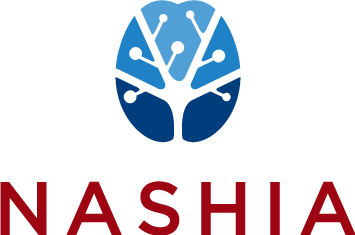You Can Work After Brain Injury: Employment Planning While Receiving Benefits
In a Disability Employment Technical Assistance Center (DETAC) brief, NASHIA Director of Community Integration Jill Ferrington discusses the benefits of working, despite challenges brought on by brain injury, as well as strategies for success. This brief focuses on considering work while also receiving federal disability benefits through the Social Security Administration (SSA). TBI grantees are asked to share this resource with key partners and request their assistance with dissemination to people with brain injury who are also beneficiaries of SSA.
The Importance of Being Earnest: Brain-Injury (BI) Informed Competencies for Employment Service Providers
In collaboration with the Disability Employment Technical Assistance Center (DETAC), NASHIA Director of Professional Development Maria Crowley authored this blog highlighting the efforts of the Administration for Community Living-funded Traumatic Brain Injury (TBI) State Partnership Program Transition and Employment Workgroup to create a “national, culturally competent, person-centered professional development employment training infrastructure for professionals serving the TBI community, known as Vocational Rehabilitation Counselor Competencies.”
Brain Injury – Enhancing Self-Directed Choice and Control
NASHIA, in partnership with Disability Technical Assistance Center (DETAC), has released Brain Injury – Enhancing Self-Directed Choice and Control, a resource on brain injury and employment targeted for Centers for Independent Living (CILs).
Podcast - The Business Side of Things: Employment and Brain Injury
NASHIA Director of Professional Development Maria Crowley moderates a podcast from the Disability Employment TA Center. The podcast is a panel discussion from an employer perspective on challenges and successes in acquiring and maintaining employment. National labor market trends and practices are shared as well as challenges that business faces in hiring and job retention. Recommendations for those who have sustained brain injuries related to seeking employment are discussed, and a personal journey from injury to work is shared.
Job Retention After Brain Injury: Why It Makes Sense
Job Retention After Brain Injury: Why It Makes Sense. Blog post by Maria Crowley, NASHIA Director of Professional Development, on behalf of the Disability Employment TA Center.
Assessing Brain Injury Needs — While Keeping the Job Seeker Engaged
Assessing Brain Injury Needs — While Keeping the Job Seeker Engaged. Blog post by Jill Ferrington, NASHIA Technical Assistance Advisor, on behalf of the Disability Employment TA Center.
Disability Employment TA Center: Guiding People with Brain Injuries Towards Work
Become a Champion for Employment: Guiding People with Brain Injuries Towards Work is a resource for supporting individuals with a brain injury to continue or pursue work.
Disability Employment TA Center: You CAN Work After Brain Injury
You Can Work After Brain Injury: Improving your Employment Success is a resource for individuals who have experienced a brain injury and want to continue or pursue work.
What You Should Know About COVID-19 and the ADA, the Rehabilitation Act, and Other EEO Laws
From the United States Equal Employment Opportunity Commission, a technical assistance question and answer document regarding disability and employment law during COVID-19.
COVID-19 and the ADA
COVID-19 related workplace issues vary widely. The Job Accommodation Network offers practical job accommodation strategies for returning individuals with disabilities to work during the COVID-19 pandemic. These strategies can enable workers with disabilities to return to the work environment, work at home, or access leave when other accommodations are not reasonable.
ODEP and VA TBI and Employment
“TBI” is an umbrella term that spans a wide continuum of symptoms and severity. In fact, the large majority (80%) of combat head injuries sustained in Operation Iraqi Freedom and Operation Enduring Freedom are mild concussions as opposed to severe, debilitating TBIs.
Alabama Fact Sheet: Workforce Accommodations
Research studies on the incidence of traumatic brain injury in domestic violence cases have revealed: greater than 90% of all injuries secondary to domestic violence occur to the head, neck or face region.
Ball State University Economic Impact of Resource Facilitation: Workforce Re-entry Following Traumatic Brain Injury
This research note provides an estimate of the potential economic impact of Resource Facilitation (RF) on traumatic brain injury (TBI) patients in Indiana.













